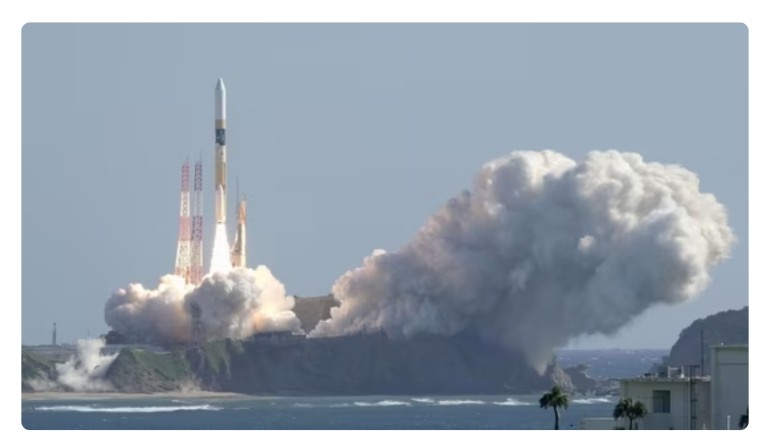Information helps in studying how celestial objects were formed...
On Thursday Japan launched a rocket carrying an X-ray telescope which will explore the origins of the universe as well as a small lunar lander.
The launch of the HII-A rocket from Tanegashima Space Center in southwestern Japan was shown on live video by the Japan Aerospace Exploration Agency, known as JAXA.
“We have a liftoff,” the narrator at JAXA said as the rocket flew up in a burst of smoke then flew over the Pacific.
Thirteen minutes after the launch, the rocket put into orbit around Earth a satellite called the X-Ray Imaging and Spectroscopy Mission, or XRISM, which will measure the speed and makeup of what lies between galaxies.
The information helps in studying how celestial objects were formed, and hopefully can lead to solving the mystery of how the universe was created, JAXA says.
In cooperation with NASA, JAXA will look at the strength of light at different wavelengths, the temperature of things in space and their shapes and brightness.
David Alexander, director of the Rice Space Institute at Rice University, believes the mission is significant for delivering insight into the properties of hot plasma, or the superheated matter that makes up much of the universe.
Plasmas have the potential to be used in various ways, including healing wounds, making computer chips and cleaning the environment.
“Understanding the distribution of this hot plasma in space and time, as well as its dynamical motion, will shed light on diverse phenomena such as black holes, the evolution of chemical elements in the universe and the formation of galactic clusters,” Alexander said.
Also aboard the latest Japanese rocket is the Smart Lander for Investigating Moon, or SLIM, a lightweight lunar lander. The Smart Lander won't make lunar orbit for three or four months after the launch and would likely attempt a landing early next year, according to the space agency.
Japan's space program has been marred by recent failures. In February, the H3 rocket launch was aborted for a glitch. Liftoff a month later succeeded, but the rocket had to be destroyed after its second stage failed to ignite properly.
Japan has started recruiting astronaut candidates for the first time in 13 years, making clear its ambitions to send a Japanese to the moon.
Going to the moon has fascinated humankind for decades. Under the U.S. Apollo program, astronauts Neil Armstrong and Buzz Aldrin walked on the moon in 1969.
In 1972, was the last NASA human mission to the moon and the focus on sending humans to the moon appeared to wane, with missions being relegated to robots.




The Brief. Sign up to receive the top stories you need to know right now.